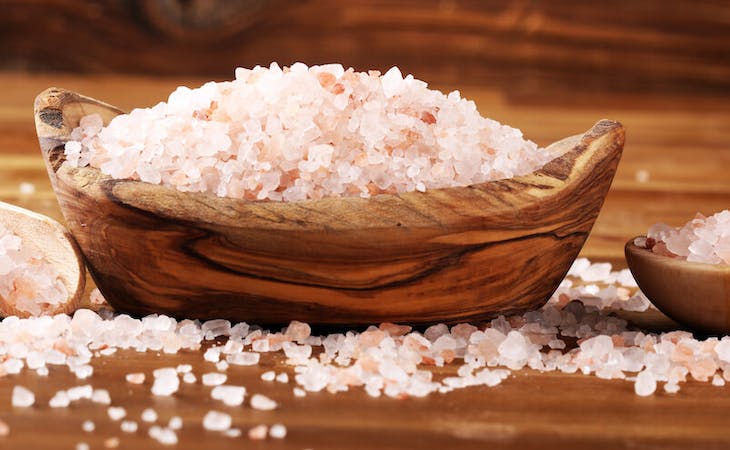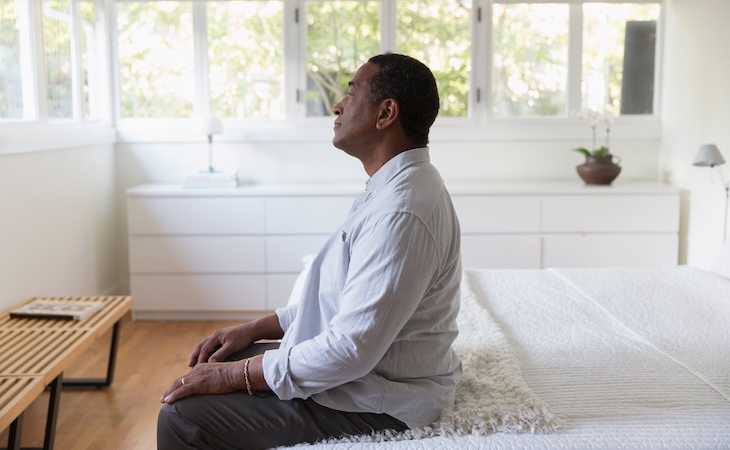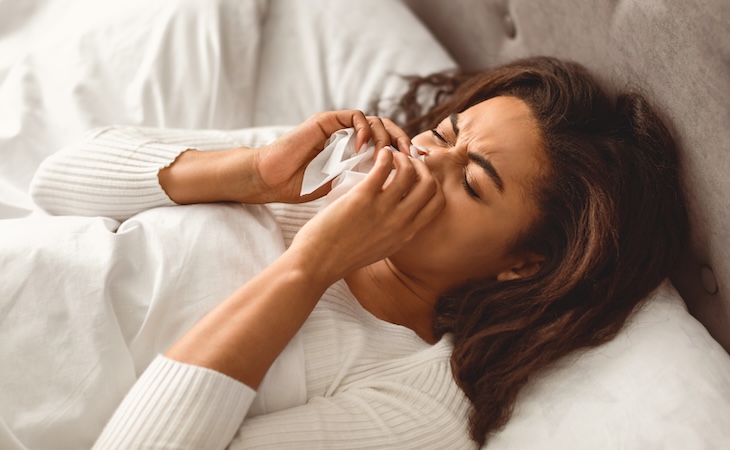A few months ago, I joined a new yoga studio after moving to a different neighborhood in my native New Jersey. When I walked in for my first class, I noticed a sign advertising salt therapy sessions. I had never heard of salt therapy before, but if this super-cool yoga studio had it, I was curious.
Salt therapy, aka halotherapy, basically involves exposing yourself to (and yep, breathing in) salt particles. Apparently, this practice started getting attention back in the 1800s, when a European doctor noticed a strange absence of lung issues in salt mine workers.
In the generations since, salt therapy has become commonplace at spas and wellness centers across the globe. These days, people get their fix of salt’s supposed goodness by relaxing in rooms literally constructed out of Himalayan sea salt and breathing in the particles the salt gives off.
Fans suggest halotherapy supports everything from mental well-being to asthma to clear skin to better sleep. But does it really work? Here’s what I happened when I tried salt therapy myself.
Trying salt therapy for better sleep
After much hemming and hawing (what can I say? I’m a bit of a skeptic), I made an appointment to chill in JaiPure Yoga’s salt room.
For half an hour or so, I’d hang in a reclining chair and put on a relaxing playlist, surrounded by walls of peach-colored Himalayan salt while a grinder diffused teeny-tiny particles of salt into the air around me.
Not sure what to expect, I arrived in a comfortable T-shirt and shorts, got settled in the recliner, turned on some soothing nature sounds, and closed my eyes. I could taste the salt with every inhale.
Fifteen minutes later, I opened my eyes to see that my skin was covered in a fine layer of salt—almost as if I’d just fallen asleep on the beach after coming out of the ocean. The receptionist told me this would happen and suggested I rub it into my skin and hair to soak up the goodness, so I did.
By the end of the session, I felt incredibly calm. It’s hard to know whether that was just because I’d taken time out of the middle of a busy day to slow down and breathe, but something about the salt certainly helped.
Restored and pleasantly salty (I love the salty residue that comes with a day at the beach), I walked out of the salt room breathing clearly. As I left the studio, the receptionist marveled at my glowing complexion, another apparent perk of halotherapy.
My sense of overall chill and ease lasted the rest of the day, and I was curious to see how my salt session would impact my sleep. My anxiety—often in the form of to-do lists and thoughts about the day—tends to keep me up when my head hits the pillow. Perhaps it was the placebo effect, but that night I drifted off in mere minutes and tossed and turned a lot less than usual.
What the experts have to say about salt therapy
I was pretty much sold after my first salt therapy session. But, still, being the journalist I am, I wanted answers about how exactly halotherapy works—and whether or not it’s scientifically legit.
My yoga studio suggested that salt therapy could relieve “some of the symptoms related to asthma, cystic fibrosis, allergies, sinusitis, snoring, bronchitis, sleep apnea, psoriasis, tonsillitis, smoker’s cough, wheezing, and many other conditions”—and that it could “help regenerate and purify the body both physically and energetically.”
As I dove into researching the topic, it seemed that, yes, halotherapy may, in fact, have actual benefits—though perhaps not as many that have been proven by science yet as fans would suggest.
“Advocates claim that, once inhaled, salt particles absorb irritants in the respiratory system, breaking up mucus and reducing inflammation to clear airways,” explains Elena Villanueva, MD, founder of Modern Holistic Health. “The salt can potentially have a similar effect on your skin by balancing pH and absorbing bacteria and other impurities.”
Right now, most of the research on halotherapy looks at its benefits for respiratory health (specifically allergies, asthma, COPD, and coughs), according to the American Lung Association.
When it comes to sleep, research has yet to explore any direct link between salt therapy and sleep quality. Some argue, though, that the respiratory benefits from breathing in all those salt particles can help you sleep. (Breathing issues like asthma are well-known to mess with sleep.)
Some also believe that halotherapy supports sleep by helping ease anxiety and depression. Though some research suggests the trace minerals found in Himalayan salt influence your mood, studies have yet to conclude that halotherapy can treat mood issues. I can tell you, though, that even if it can’t be explained scientifically, my salt therapy session did leave me feeling more at ease, and that sense of well-being certainly paid off come bedtime.
“Because halotherapy is conducted with a warm ambience and cozy environment, it can help alleviate stress and fatigue,” says Villanueva. “For the allotted time, people find themselves deeply relaxing by detaching from technology and turning their brains off for a moment, making halotherapy salt caves somewhat of spiritual vessels.”
Some also claim the negative ions given off by the salt support production of the feel-good hormone serotonin, but more research is needed to confirm that one, per one BMC Psychiatry review.
That said, according to Villanueva, halotherapy seems to be safe for most people, so there’s no harm in trying it.
Beyond salt therapy
If I’ve learned one thing about halotherapy, it’s certainly not going to hurt your sleep; as Villanueva says, I think we could pretty much all benefit from more guaranteed unplugged time in our days.
However, if soaking up lots of salt just isn’t for you, there are plenty of other science-backed ways to sleep better.
A few basic must-dos:
- Get as much sunshine as possible in the morning—and dim the lights after sunset
- Spend the last hour before bed away from technology and do something relaxing, like reading
- Keep your bedroom between 60 and 67 degrees
- Stick to the same bedtime every day of the week (yes, that means weekends, too)
Nixing caffeine around six hours before bedtime, exercising at least three hours before bedtime, and making lunch a bigger meal than dinner can also help ensure you sleep well.
Intrigued by halotherapy? Here are more trendy wellness treatments that could help you sleep.




